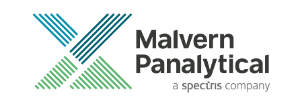Malvern Panalytical has announced a new webinar ‘Characterising Liposome Formation, Structure and Stability with Complementary Techniques’ that will take place this month.
Available at 10:30 (GMT – 5:00) Eastern US and Canada time on 23 January, the webinar will discuss liposomes, which have been used in drug discovery and drug delivery for some time.
The biophysical characterisation of these systems and their payloads is critical to understanding and optimising their fabrication and function. This study looks at optimal conditions for extruding liposomes as well as their stability under different conditions.
Malvern Panalytical aims to further educate the public about the intricacies of liposome formation and characterisation as measured by Nanoparticle Tracking Analysis (NTA) from the NanoSight product range, dynamic and electrophoretic light scattering (DLS/ELS) from the Zetasizer product range, and small-angle and wide-angle X-ray scattering (SAXS/WAXS) from the X-ray analytical product range within Malvern Panalytical.
A broad range of characterisation information and combinations of both NanoSight and Zetasizer systems helped further optimise fabrication and understand the function of liposomes, as well as labelling efficiency of fluorescent lipids.
NTA through NanoSight provided number-based high-resolution sizing, accurate distribution profiles, concentration (particles/ml), and fluorescence measurements.
DLS provided excellent reproducibility, mean size and poly-dispersity index (PDI) measurements over a broad range and non-invasive trend analysis. ELS provided zeta potential as a functionality and stability metric of particles.
SAXS allowed investigations of bilayer stacking in multilamellar lipid vesicles (MLV) and from WAXS data the order of the alkyl chains (gel phase versus liquid phase) could be studied as a function of sample temperature.
Speaker Ragy Ragheb is a technical specialist at Malvern Panalytical specialising in the NanoSight and Zetasizer product ranges. Ragy received his PhD in Macromolecular Science and Engineering from Virginia Polytechnic Institute and State University and completed his post-doctoral work in Biomedical Engineering at Yale University. His research focused on the fabrication and characterisation of several synthetic and metal-based nanoparticle systems for theranostic and drug delivery applications.
Second speaker Joerg Bolze holds a degree in chemistry and a doctorate in colloid science, both obtained from Karlsruhe University in Germany. In 2006, he joined PANalytical in the Netherlands, a leading supplier of instrumentation for X-ray diffraction and X-ray fluorescence analysis. As an applications specialist for small-angle X-ray scattering, he was involved in the development of this technique on a multi-purpose X-ray diffractometer platform.
He is now a product manager for nanomaterials at PANalytical. During 1997-2001, he worked as a postdoctor at leading research institutes in Japan and Korea, where he applied various X-ray analytical techniques at synchrotron radiation facilities. He later joined INTERPOLYMER in France where he worked as an applications chemist on emulsion polymers as binders in various types of speciality paint and lacquer formulations.
Who should attend?
Anyone who interested in characterising both biological and synthetic nanoparticles will find this webinar useful.
What will you learn?
Viewers will learn the benefits and complementary nature of both NanoSight (nanoparticle tracking analysis) and Zetasizer (dynamic and electrophoretic light scattering) in characterising liposomes.

